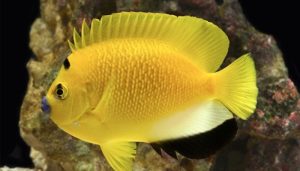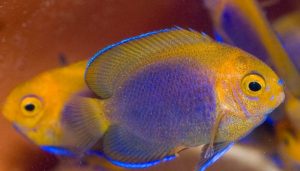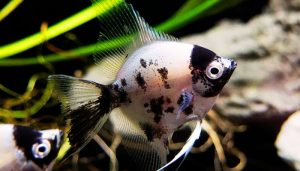Are ghost shrimp nocturnal? Learn their sleep and activity patterns. If you’ve ever watched these tiny, transparent creatures scuttle around your aquarium, you might wonder—do they sleep at night, or are they more active when the lights go out? Understanding their behavior can help you create a better environment for them.
Ghost shrimp are not strictly nocturnal, but they are more active at night. During the day, they tend to hide and scavenge cautiously, while nighttime brings out their natural foraging instincts.
Their sleep cycle is irregular, with short rest periods scattered throughout the day and night.
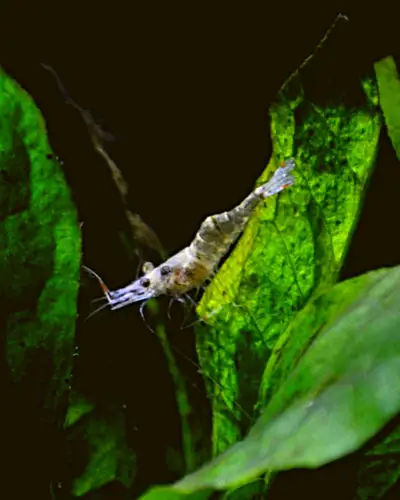
Want to know how to spot their activity patterns and improve their habitat? Experts like Dr. Tim Miller-Morgan, a leading aquaculture specialist, suggest specific lighting and tank conditions for their well-being.
Let’s dive into the fascinating world of ghost shrimp and uncover their hidden behaviors!
Table of Contents
ToggleAre Ghost Shrimp Nocturnal?
Ghost shrimp are often considered nocturnal, exhibiting their most active behaviors during the night. In a well-planned aquarium setup, these shrimp thrive in low-light conditions, which can stimulate their natural instincts.
Since Palaemon paludosus shrimp, like most shrimp, are scavengers, they tend to forage for food during the evening when they feel most secure. This nocturnal activity is crucial for their survival, as it allows them to avoid potential predators that may be more active during the day.
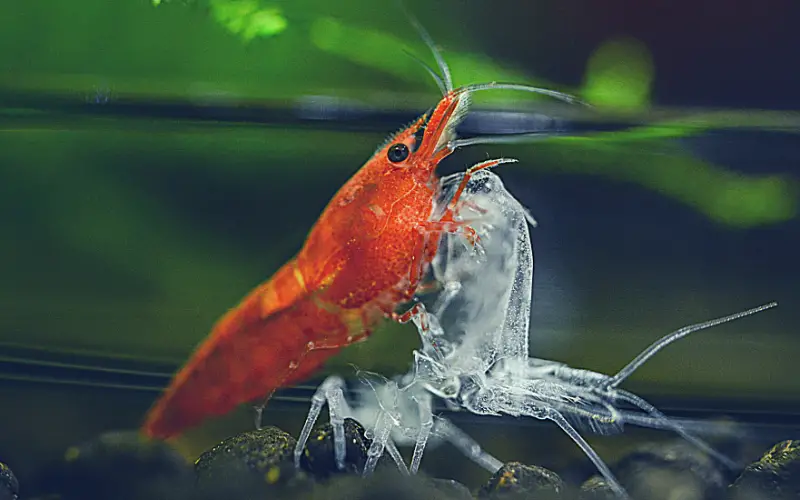
Moreover, keeping freshwater shrimp in a community tank with suitable tank mates can also influence their nocturnal habits. When housed with peaceful species, ghost shrimp may feel more at ease and display their natural behaviors more frequently.
In contrast, a stressful environment could cause these shrimp to hide more often, leading to a perception that they are less active. Thus, understanding their nocturnal patterns is essential for ensuring their well-being in your aquarium.
How Do Ghost Shrimp Sleep?
Do ghost shrimp sleep? Ghost shrimp do not sleep in the traditional sense, as they remain semi-active even during their resting periods. Instead of entering a deep sleep, they tend to become less responsive and may hide among live plants or substrate in the aquarium.
This behavior is similar to other shrimp species, where they find safe spots to rest while remaining vigilant for potential threats. During these times, their antennae may still move slightly, indicating a state of light sleep rather than complete inactivity.
Additionally, many aquarists notice that ghost shrimp can often be found resting in crevices or on the glass of the aquarium. This behavior not only provides them with safety but also allows them to be close to their food source.
When ghost shrimp molt, they may also seek shelter, which can be mistaken for sleeping. Understanding these nuances of ghost shrimp behavior is vital for anyone looking to keep these intriguing creatures healthy and thriving in their aquatic environment.
Numerous novice aquarium enthusiasts often overlook Ghost Shrimp, yet they can actually be a fascinating invertebrate to maintain on their own.
Are Ghost Shrimp Very Active?
Ghost shrimp are known for their moderate activity levels, particularly during their nocturnal foraging periods. They are not as boisterous as some other shrimp species, such as cherry shrimp or amano shrimp, but they do have their moments of energetic movement.
These shrimp may scuttle around the aquarium, scavenging for algae, detritus, and any leftover food, including dead shrimp or fish. Their activity levels can fluctuate based on water conditions, tank mates, and whether they are preparing to molt.
Interestingly, ghost shrimp exhibit bursts of activity when they sense food in the water. This scavenging behavior is crucial for their role in the aquarium ecosystem, as they help keep the tank clean by consuming organic waste.
However, if they are kept in small tanks or crowded environments, Palaemon paludosus shrimp may become stressed, leading to reduced activity levels. Providing a spacious environment with plenty of hiding spots and live plants can encourage ghost shrimp to express their natural behaviors more freely.
How to Tell If a Shrimp Is Sleeping?
Identifying when ghost shrimp are sleeping can be a bit challenging, as they do not completely stop moving. However, there are subtle signs that indicate they are in a resting state. One key indicator is their reduced responsiveness to stimuli.
When ghost shrimp are sleeping, they may remain still for extended periods, often tucked away in plants or substrate. Additionally, their antennae movements may slow down, and they might not react as quickly to passing fish or changes in the aquarium environment.
Another telltale sign is their body posture. When resting, ghost shrimp may adopt a curled position or anchor themselves to a surface with their legs. This behavior is often seen when they prepare to molt, as they seek safety during this vulnerable time.
Observing these behavioral cues can help aquarists determine the health and well-being of their ghost shrimp, ensuring that their needs are adequately met within the aquarium setup.
Conclusion
Are shrimps nocturnal? In conclusion, ghost shrimp exhibit fascinating nocturnal behaviors that are essential for their survival and well-being. Understanding whether ghost shrimp are nocturnal, how they sleep, and their activity levels can significantly enhance the care they receive in an aquarium setting. By recognizing signs of resting and providing a suitable environment, aquarists can keep ghost shrimp healthy and thriving alongside other aquatic species. As these shrimp play a crucial role in maintaining a balanced aquarium ecosystem, appreciating their unique behaviors will undoubtedly lead to a more rewarding experience for both the shrimp and their keepers.
Ultimately, whether you are a seasoned aquarist or just starting your journey with ghost shrimp, being aware of their nocturnal habits and sleeping patterns can make all the difference. By creating an environment that mimics their natural habitat, you can ensure your freshwater shrimp remain active and healthy, contributing to the overall beauty and balance of your aquarium. Enjoy observing these intriguing creatures and their behaviors as they bring life to your community tank.
You might also like
- What Do Shrimp Eat: 4 Essential Feeding Habits & Tips!
- Do Shrimp Eat Fish Poop: (5 Best Tank Clean-up Crews!)
- How Long Do Ghost Shrimp Live: (Prolong Their Lifespan)
- Ghost Shrimp Facts: Some Excellent Caring Tips (Should Know)
- Ghost Shrimp Life Span 101: Excellent Tips You Can’t-Miss
- Cherry Shrimp Temperature: The 72°F Secret Breeding Success
- Can Ghost Shrimp Get Ich Disease: 7 Signs Your Shrimp Are Sick!
- Do Ghost Shrimp Clean Your Tank Effectively: 3 Surprising Tips!
- Are Ghost Shrimp Fish Poop Eaters: (3 Negative Impacts Revealed!)
- Newborn Ghost Shrimp Larvae: The 7-Step Guide to Keeping Them Alive
- Texas Ghost Shrimp Regulations: 5 Hacks for Epic Catches!
- Marine Ghost Shrimp: 7 Shocking Facts You Won’t Believe!
- Neocaridina Shrimp Male Vs Female: 3 Simple Hacks for Accurate ID


